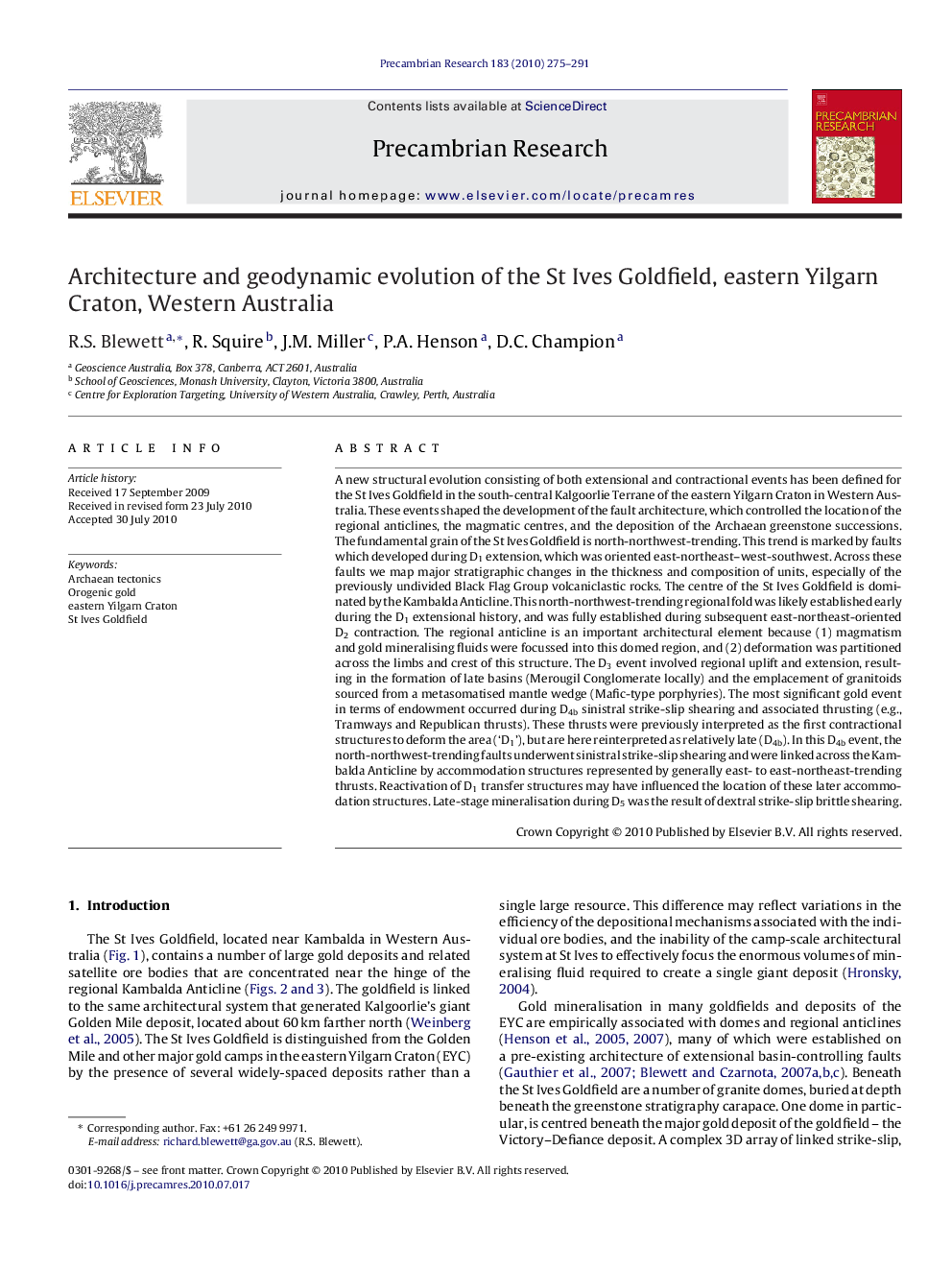| کد مقاله | کد نشریه | سال انتشار | مقاله انگلیسی | نسخه تمام متن |
|---|---|---|---|---|
| 4723779 | 1355546 | 2010 | 17 صفحه PDF | دانلود رایگان |

A new structural evolution consisting of both extensional and contractional events has been defined for the St Ives Goldfield in the south-central Kalgoorlie Terrane of the eastern Yilgarn Craton in Western Australia. These events shaped the development of the fault architecture, which controlled the location of the regional anticlines, the magmatic centres, and the deposition of the Archaean greenstone successions. The fundamental grain of the St Ives Goldfield is north-northwest-trending. This trend is marked by faults which developed during D1 extension, which was oriented east-northeast–west-southwest. Across these faults we map major stratigraphic changes in the thickness and composition of units, especially of the previously undivided Black Flag Group volcaniclastic rocks. The centre of the St Ives Goldfield is dominated by the Kambalda Anticline. This north-northwest-trending regional fold was likely established early during the D1 extensional history, and was fully established during subsequent east-northeast-oriented D2 contraction. The regional anticline is an important architectural element because (1) magmatism and gold mineralising fluids were focussed into this domed region, and (2) deformation was partitioned across the limbs and crest of this structure. The D3 event involved regional uplift and extension, resulting in the formation of late basins (Merougil Conglomerate locally) and the emplacement of granitoids sourced from a metasomatised mantle wedge (Mafic-type porphyries). The most significant gold event in terms of endowment occurred during D4b sinistral strike-slip shearing and associated thrusting (e.g., Tramways and Republican thrusts). These thrusts were previously interpreted as the first contractional structures to deform the area (‘D1’), but are here reinterpreted as relatively late (D4b). In this D4b event, the north-northwest-trending faults underwent sinistral strike-slip shearing and were linked across the Kambalda Anticline by accommodation structures represented by generally east- to east-northeast-trending thrusts. Reactivation of D1 transfer structures may have influenced the location of these later accommodation structures. Late-stage mineralisation during D5 was the result of dextral strike-slip brittle shearing.
Journal: Precambrian Research - Volume 183, Issue 2, 15 November 2010, Pages 275–291